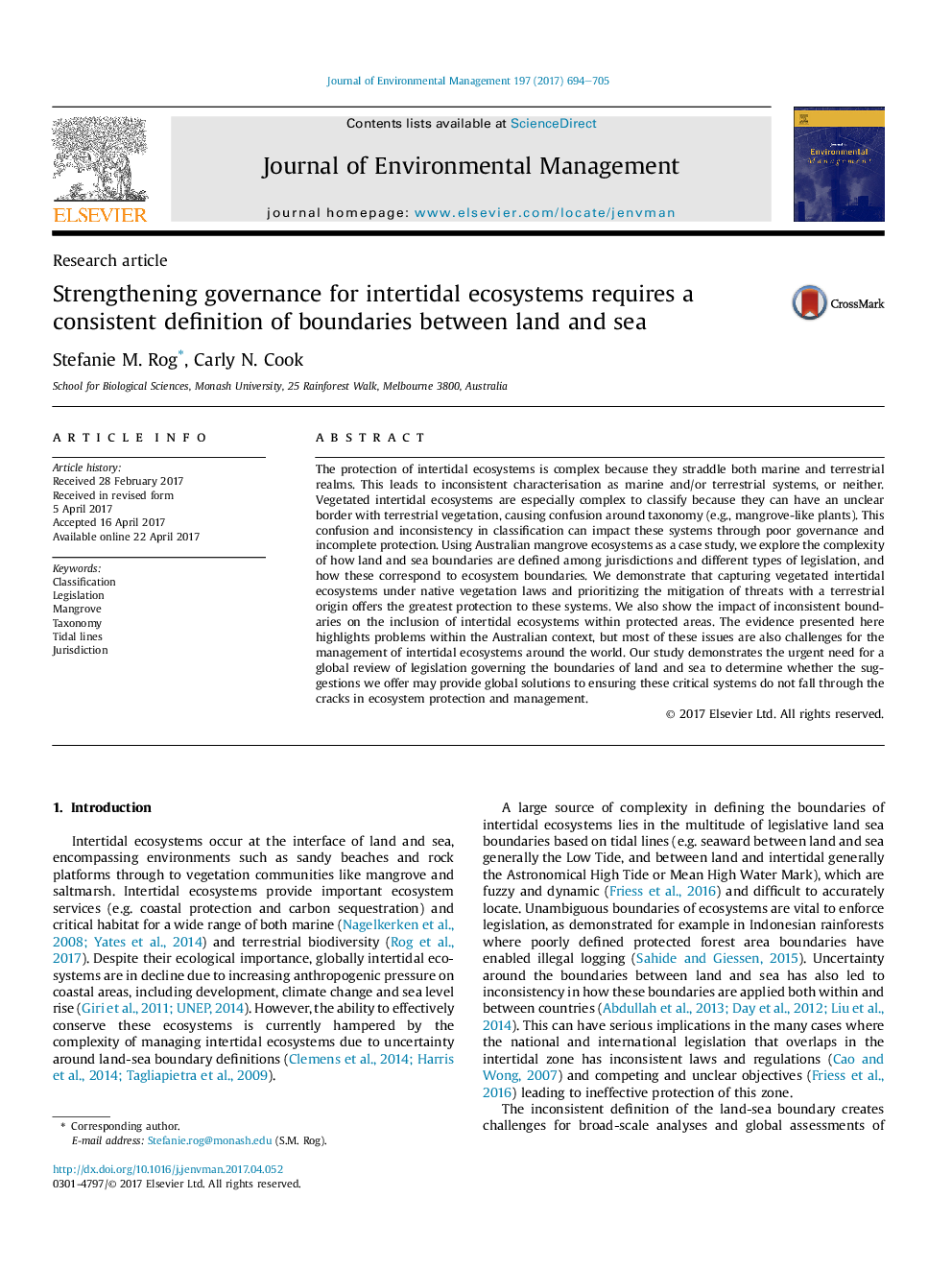| Article ID | Journal | Published Year | Pages | File Type |
|---|---|---|---|---|
| 5116992 | Journal of Environmental Management | 2017 | 12 Pages |
â¢Intertidal protection is complex as it straddles marine and terrestrial realms.â¢Vegetated intertidal ecosystems especially complex due to unclear boundaries.â¢Consistent definitions and classifications are required for complete protection.â¢Mitigating terrestrial threats is most efficient for protecting intertidal systems.â¢Crucial to expand protected area boundaries to encompass the full intertidal zone.
The protection of intertidal ecosystems is complex because they straddle both marine and terrestrial realms. This leads to inconsistent characterisation as marine and/or terrestrial systems, or neither. Vegetated intertidal ecosystems are especially complex to classify because they can have an unclear border with terrestrial vegetation, causing confusion around taxonomy (e.g., mangrove-like plants). This confusion and inconsistency in classification can impact these systems through poor governance and incomplete protection. Using Australian mangrove ecosystems as a case study, we explore the complexity of how land and sea boundaries are defined among jurisdictions and different types of legislation, and how these correspond to ecosystem boundaries. We demonstrate that capturing vegetated intertidal ecosystems under native vegetation laws and prioritizing the mitigation of threats with a terrestrial origin offers the greatest protection to these systems. We also show the impact of inconsistent boundaries on the inclusion of intertidal ecosystems within protected areas. The evidence presented here highlights problems within the Australian context, but most of these issues are also challenges for the management of intertidal ecosystems around the world. Our study demonstrates the urgent need for a global review of legislation governing the boundaries of land and sea to determine whether the suggestions we offer may provide global solutions to ensuring these critical systems do not fall through the cracks in ecosystem protection and management.
